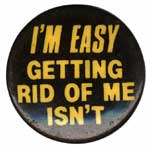I haven’t been able to paint much due to a huge disaster. A pipe burst, flooding much of my basement with an inch of water. It reminds me of one of my favorite jokes.
Two businessmen are flying to Tahiti, sitting next to each other in First Class. One of them complains to the other, “my factory was completely destroyed by a fire, but I had tons of insurance and it paid for everything, with enough left over for a nice vacation in Tahiti.” The other businessman says, “that’s almost exactly what happened to me, except my factory got wiped out in a flood.” The first businessman says, “Hey, that’s amazing, how do you start a flood?”
Category: General
BlogTV Live: Art Stunt Day 2
I’m continuing to work on my painting for the second day. Progress is slower, I’m at that point of maximum dissatisfaction with the imagery, so now I have to make radical changes, and each decision is much harder.
I’m having a little trouble working, due to my new eyeglasses. My opthalmologist said I’d hate bifocals so he prescribed me two different glasses, one for reading, one for general tasks. Unfortunately neither set is just right for painting, so I’m constantly switching, and usually forgetting to switch back.
7:17PM – I was too tired to paint much today, I got up too early for the Stevenote. I have to run some errands for an hour or so, but I’ll be in the studio painting tonight. That’s one of the good things about working in black and white, you can work at night under worse lighting conditions than you need for color.
11:30PM – I’m fiddling with the video, trying to get a larger, more detailed picture. I tried setting the size to 240×320, but it would only display a cropped frame. I’m still working on the best way to present this, I need a cool QuickTime HTML authoring gadget. I tried using Dreamweaver MX but it makes you deal with QuickTime through ActiveX. Yuk.
The Only Good Art Joke
There just are no jokes about art that everyone laughs at. There is a long tradition of poking fun at modern art, but there just aren’t any gut laughs, except for this one joke. It’s a sight gag, so I will show you the painting too.
On the Mary Tyler Moore show, Mary has convinced Lou to let Rhoda redecorate his apartment. The refurbishment is done and Lou hates it. Everything is a modern designer’s fantasy in chrome and glass, and the centerpiece is a very fine painting, “I Dreamt I Saw the Number Five in Gold” by Charles Demuth.

This is one of my favorite paintings, it’s in the Metropolitan Museum of Art, and is considered a primary example of early American Modernism. But Lou hates the painting. Rhoda isn’t around so he yells at Mary, questioning Rhoda’s artistic taste. He accuses Rhoda of being too hasty in selecting his furnishings. He goes right up to the Demuth painting and screams at Mary, “I bet Rhoda had to look through four other paintings before she picked this one!”
My Favorite Art Joke
I finally located the original text of my favorite joke, as published long ago in Ian Shoales’ San Francisco Chronicle column. I’ve told this joke over and over and mangled it and never done it justice. So here it is.
How many deconstructionists does it take to screw in a light bulb?
Even the framing of this question makes a grid of patriarchal assumptions that reveals a slavish devotion to phallocentric ideas – such as, technical accomplishment has inherent value, knowledge can be attained and quantities of labor can be determined empirically, all of which makes a discourse which further marginalizes the already disenfranchised.
Masters of American Photography Postage Stamps
I was pleased to see the new US Postage Stamps issue commemorating great American Photographers. I was particularly pleased to see an image by one of my favorite photographers, Gertrude Kasebier.

However, I was particularly displeased when I decided to look up the original image and discovered it was cropped severely. Kasebier would not approve of this alteration. Photographers of this era used to debate endlessly about whether images should ever be cropped.
Kasebier was born in Des Moines, Iowa and traveled to Paris to learn photography and painting. Unfortunately, women artists of this period were relegated to the fringes of the art world. Many people compare her photography to lesser French Impressionists like Marie Cassat, since they both produced many woman-and-child portraits. This is an unfair comparison, Cassat’s work is second rate, while Kasebier’s work was amongst the best of the Photo Secession. Cassat had little influence on her peers, while Kasebier was extremely influential.
Kasebier is particularly important to me because she worked in media like Platinography and Gum Bichromate. Of course in those days, these were the standard methods for producing fine art photography. Today, these methods are mostly a lost art and are considered an “alternate process.” I work with these same processes, precisely because I see the same pictorial advantages of those processes that Kasebier saw.
I remember seeing an original Kasebier print at the huge “150 years of Photography” exhibit at the LA County Museum of Art. These prints are so rich that no reproduction could possibly capture them. Since then, I have sought to produce photographs that must be seen firsthand. I owe much to Kasebier’s work, so it irritates me to see her work altered so severely at the same time it finds a wider audience than it ever has.
Rolex Domino’s Pizza Special Edition
Yes, it’s a real official Rolex product, an Oyster Perpetual with the Domino’s Pizza logo. Scanned from a Japanese design magazine.
SUVs and The Tragedy of the Commons
Sport Utility Vehicles are a classic example of the basic paradigm of environmental destruction, The Tragedy of the Commons by Garrett Hardin. This is a complex theory, so I shall attempt to explain it as simply as possible.
There are many shared resources in our society, for example, the air and water. Hardin uses the example of a grazing field, a “Commons” as was frequently used in the early days of Pre-Revolutionary America. Farmers would each have a small amount of livestock, and shared the Commons to graze them. The Commons served the public equally, and all were entitled to take from it equally.
Let us hypothesize ten farmers, each has 10 sheep. Each farmer benefits equally from grazing their sheep on the Commons. Each makes a profit from shearing the sheep at the end of the year, let’s call it 10 bales of wool.
So one day, a greedy farmer decides he could make more profit from adding another sheep. Now he has 11 sheep and all the other farmers have 10. At the end of the year, he has 11 bales of wool, a 10% increase in profit over all the other farmers. The increased environmental impact of 101 sheep grazing is negligible as opposed to 100 sheep. Yet the Commons is a finite resource, and has a limit to how many sheep it can support without collapsing from overgrazing. For the sake of argument, let’s set it at 150 sheep.
Now it’s next year, and the other farmers see the new wealth created by the 11th sheep. So they all go out and buy another sheep for themselves. Now there are 110 sheep on the Commons. This is still well within the capacity of the Commons, with more capacity remaining. Nobody knows they are set on the path to destruction, they all believe they are on the path to riches.
Over the next 4 years, each farmer adds another sheep to their flock each year. The Commons system gives each farmer an economic incentive to add more sheep. But now there are 150 sheep. The field is overgrazed, and during the heat of the summer, the grass withers and provides insufficient food for the sheep. The Commons has collapsed, and all the sheep die of starvation. This is the Tragedy of the Commons. Any unregulated shared resource carries a built-in economic incentive to drive it to destruction.
Let’s analyze the SUV’s impact in the light of the Commons paradigm. One of the main reasons people buy SUVs is that they offer improved safety to their passengers in a crash. The National Highway Traffic Safety Administration has released statistics clearly showing that SUVs are a greater threat to other drivers than passenger vehicles.
NHTSA crash statistics demonstrate that, in side impact crashes, LTVs are more injurious as a striking vehicle than are passenger cars. For example, when LTVs strike passenger cars on the left side, the risk of death to the car driver can be 30 times higher than the risk to the LTV occupant. This compares to a driver fatality ratio of 6.6 to 1 in car-to-car left side impact crashes.
In this example, Highway Safety is the Commons, our shared resource. The SUV owner has increased his safety, by increasing the risk to other drivers. The incremental cost, the increase of safety risks to all drivers from one SUV is negligible. But normal automobile drivers see the SUV, and they realize they are less safe when driving next to SUVs. Now they must buy an SUV to keep the same level of safety as before, when everyone was driving smaller vehicles. Soon the highway is filled with SUVs, normal passenger cars are no longer safe to drive. Our common resource, safety, has collapsed.
SUVs are a curse upon society, a symbol of greed and selfishness. There was no more classic example than what I encountered today. I was rushing to the local pharmacy to pick up some medicine before they closed, the only parking spot was blocked by an SUV that took up two spots. I could not find another parking spot. I waited for the driver to return. She leisurely strapped her kids into the car, taking her time before departing. The pharmacy closed before she left and I was able to park. Such selfishness. This is what I call “Yuppie Syndrome.” People somehow believe that their time is more valuable than anyone elses, and that they have the right to do whatever they goddam well please, despite any inconveniences they cause to others. Excuse me, this is America, where all people are equal, and my need for that parking spot is equal to yours. You have no right to more than your fair share of our common resources. And you sure as hell don’t have any right to deprive other people of resources in the process of taking more than your fair share.
Stupidest College Athlete Ever
College athletes are notorious for their lack of brains, but University of Iowa athlete Derreck Robinson wins the prize for complete and utter stupidity, resulting in his arrest. Robinson drove into a local convenience store at 4AM, the store had a police car parked in front, with the police officer standing in plain sight inside the store. This should have been the first sign of danger for Robinson, he was previously arrested for underage drinking and his license was suspended. He walked right past the cop, and proceeded to smoke a joint in the public bathroom of the store. Robinson was arrested and charged with marijuana posession and driving on a suspended license.
Incident at Lace Gallery
I was reminiscing about LACE Gallery in my last post, and I started thinking about an incident that happened at LACE many years ago. I used to stop in the LACE store often, they carried all the expensive art magazines I couldn’t afford, and most of the magazines I had to have. I spent a fair amount of money there, considering I was a starving artist, living in a decrepit loft that cost every penny I earned.
So one day Susie and I are shopping in the store, they had a huge bowl up on the counter full of buttons. I love to collect buttons, and I have some particularly fine old buttons with punk band names, slogans, etc. No self-respecting punk rocker would be caught without a nice button on their jacket. So we rooted through the bowl, looking for some amusing buttons. I didn’t find anything I liked so I went over and looked at magazines while Susie kept searching. As I was reading an article, Susie came over and gave me a button. I read it and laughed aloud, I thought she’d bought it for a quarter and given it to me. So I put it in my shirt pocket. I returned to reading and completely forgot I even had the button.
A few minutes later, as I finished selecting some magazines to purchase, the guy running the cash register came up to me and started yelling at me that he saw what I did. I didn’t have any idea what he was talking about. He yelled at me about shoplifting. I said I intended to purchase these magazines. Without any explanation, he grabbed at me, so I pulled back and put up my fists. I told him that if he wanted to lay a hand on me, he better be prepared to put up a fight. The scrawny kid looked at me, a 6’2″ 225lb punk rocker in a leather jacket, and decided against it. He yelled that he was going to call the cops, so I told him he better do it NOW, because I was leaving and I was not going to purchase these $25 of magazines either. The kid did not call the cops, so I stomped out of the gallery and got in the car to go back to my loft (yeah, I only lived 2 blocks away but nobody walks in LA, especially near Skid Row).
As soon as Susie got into the car, she burst out laughing. She told me what had happened. She merely intended to show me the button, and I pocketed it without realizing that she hadn’t paid for it. She started the whole incident, and said nothing while it went down. Of course I was pretty mad, but mostly because I didn’t get to buy my favorite art magazines. I still have the button:

Arts Funding Stolen
Public funds intended for purchasing artworks is being wasted and stolen. Money intended to support artists and the arts community is being paid to government bureaucrats.
The University of Iowa Hospital has an agressive public art program. Under state law, a fixed percentage of all construction funds must be spent purchasing art that can be viewed by the public. The U of I has an impressive collection of work by internationally famous artists as well as many local artists, these works are seen by tens of thousands of people every day. Even the busiest museums cannot hope to present art to such a large audience.
Today, I took my mother to an appointment at the U of I Hospital. I passed familiar favorite artworks by Sol LeWitt, Andy Warhol, as well as several works by my favorite art school professors, artists I studied with. I walked through the new hospital wing, wondering what new works were selected. To my astonishment, the works were aerial photoreconaissance images of our city, maps produced by the US Geological Survey, and photographs of Earth from space provided by NASA. Certainly these images are fascinating, but they just are not art, they’re maps. Even worse, these images were prominently labeled that they were purchased with public funds for the arts. But these images are available free from the Government Accounting Office, for merely the costs of reproduction (which is insanely low ). The GAO provides prints of publicly owned artworks by famous artists like Ansel Adams. For the same cost of reproduction, they could have bought great art.
So I immediately went up to the hospital’s Project Art office to ask them why they are spending big money to purchase and frame US Government maps that they could get for almost free, instead of purchasing work by local artists. They said that their exhibits are intended to represent a diverse set of points of view. I retorted that these artworks represent no point of view except maybe LANDSAT, and they were chosen precisely to work around their desire to present diverse artworks. The maps were chosen specifically because they were not art and would not offend anyone. These works were hung in the Eye Clinic, which is a Lasik mill. Lasik is the hospital’s cash cow, and most of their patients are older rural Iowa residents, presumably with conservative (if not philistine) attitudes towards the arts. In order not to offend their clients, they have relegated real art to the corners, while technical images take center stage.
But most infuriating of all was their protestation that purchasing these maps did not deplete art purchase funds. They refused to believe these maps were purchased with funds from their own project. I told them to go down and look at the labels, they were all prominently labeled with the message required when public taxpayer money was spent.
It appears that funds have been misappropriated, spent on junk that the project was never intended to be involved with. Even worse, the money was given to bloated Federal bureaucrats instead of struggling artists. I am going to get to the bottom of this. At best it’s misappropriation of funds, at worst it’s a felony.